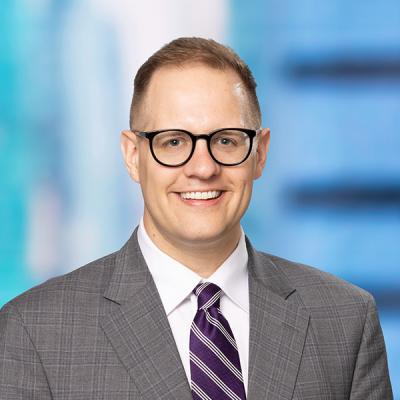New York State to Provide Paid Sick Leave, Other COVID-19 Protections for Workers
UPDATE: As the guidance for this new law is rapidly evolving, please visit our updated blog post for the most recent information.
As New York State announced that it had confirmed over 2,300 cases of the COVID-19 coronavirus, New York Governor Andrew Cuomo signed into law new requirements for New York State employees affected by the virus. The new law was swiftly enacted in light of the urgent public health and economic crises facing the state, and goes into effect immediately. It mandates that New York employers offer paid sick leave and job protections for workers quarantined as a result of the coronavirus outbreak. We highlight the proposal’s key changes below:
Employers Are Obligated to Provide Paid/Unpaid Leave for Quarantined Employees
All New York State employers must now provide sick leave to employees who have been subjected to mandatory or precautionary orders of quarantine or isolation due to COVID-19 (those issued by New York State, a local health board, or any other governmental entity authorized to issue such order). The employer’s size and net income will dictate the duration of that leave, and whether it is paid or unpaid:
- Employers with 10 or fewer employees (as of Jan. 1, 2020), and net income of less than $1 million in the previous tax year, must provide unpaid sick leave until the termination of any quarantine or isolation.
- Employers with 10 or fewer employees (as of Jan. 1, 2020), and net income of more than $1 million in the previous tax year, must provide at least 5 days paid sick leave, then unpaid sick leave until the termination of any quarantine or isolation.
- Employers with 11 to 99 employees (as of Jan. 1, 2020) must provide at least 5 days paid sick leave, then unpaid sick leave until the termination of any quarantine or isolation.
- Employers with 100 or more employees (as of Jan. 1, 2020), as well as all public employers, must provide at least 14 days of paid sick leave during any order of quarantine or isolation.
In all instances, the paid/unpaid leave noted above must be provided without loss to any other accrued sick leave provided by the employer that the employee has available. Consequently, this leave will be in addition to any other employer-provided sick leave.
Disability & Paid Family Leave Usage:
The new law also allows employees who receive less than 14 days of quarantine-related paid leave (i.e. employees of employers with less than 100 employees) to use existing New York Paid Family Leave (NYPFL) and disability benefits for the remainder of the quarantine or isolation period. The law expands the coverage of “disability” to expressly cover an employee’s inability to work as a result of a quarantine or isolation order, and expands the coverage of NYPFL to expressly cover an employee’s leave from work due to such an order, or if the employee’s dependent child requires care due to a quarantine or isolation order. Note that the new law does not expressly permit employees of larger employers (those employing 100 or more employees) to use existing NYPFL or disability benefits.
The law states that NYPFL and disability benefits will run concurrently. Employees will be able to earn a weekly maximum of $840.70 in NYPFL benefits and $2,043.95 in disability benefits, and the seven-day waiting period to collect disability benefits for these purposes has been eliminated.
Miscellaneous Provisions:
Other miscellaneous provisions of the new law include the following:
- Telecommuting Employees without Symptoms: Employees are not eligible to take sick leave if they are deemed asymptomatic or have not yet been diagnosed with a medical condition, and are physically able to work remotely or through other means while under a mandatory quarantine or isolation.
- Job-Protected Leave & Anti-Retaliation Measure: The new law includes a requirement that an employee be restored to their same position following the leave, with the same pay and other terms and conditions of employment. It also includes an anti-retaliation measure which prohibits employers from discharging, penalizing, or otherwise retaliating against any employee for taking this protected leave. The new law does not address situations in which the previous position no longer exists when the employee is able to return to work following quarantine or isolation.
- Integration with Local Sick Leave Laws: New York State employers would remain subject to local sick leave ordinances (such as those in New York City or Westchester) that meet or exceed the requirements of the State’s new quarantine leave law.
- Coexistence with Newly Enacted Federal Law: The new law also specifies that should the federal government provide sick leave and/or other benefits to employees in response to COVID-19, which it has done effective as of April 1, 2020, the leave provided under New York’s law shall not be in addition to the federal benefits, but rather will supplement the benefits offered by the federal government, up to difference between the benefits available under New York’s law and the smaller benefits available under the federal law.
- Separate Provisions for Employees Who Recently Returned from Non-Business Travel: The new law specifies that employees who have returned to the United States after non-business-related travel to a country which the Centers for Disease Control (CDC) had issued a level two or three travel health notice are not eligible for the law’s benefits, if the employee was provided notice of the travel advisory and chose to travel nonetheless. Employees falling under this category are entitled to use any accrued leave provided by the employer. If the employee does not have accrued leave, the employee may use unpaid leave for the duration of the quarantine or isolation.
- Unemployment Benefits Waiting Period Waived: The unemployment insurance benefits one-week waiting period has been waived. Employees who are unable to work because their employer is closed for a reason related to COVID-19 are now immediately able to apply and receive unemployment benefits.
Next Steps for Employers:
Given that this emergency legislation has just been enacted and is immediately effective, New York employers should quickly to do the following:
- Confirm employee headcount, taking into account part-time employees and any planned layoffs, to determine which provisions of the law apply (i.e. the amount and payment status of the leave);
- Think about drafting a stand-alone sick leave policy that outlines these new sick leave rights, with an eye toward ensuring that this policy temporarily supplements the company’s existing leave of absence, sick leave, and PTO policies and accounts for the new federal emergency leave benefit law;
- Prepare to account for the new sick leave entitlements from a financial/accounting perspective;
- Communicate the new provisions to employees who are now eligible for coronavirus-related quarantine and isolation leave.
- Consider potential fluctuations in staffing levels in anticipation of employees taking advantage of these leave entitlements within days or in the near future; and
- Be mindful of parallel or overlapping statutory leave requirements, including the new Federal leave law.



